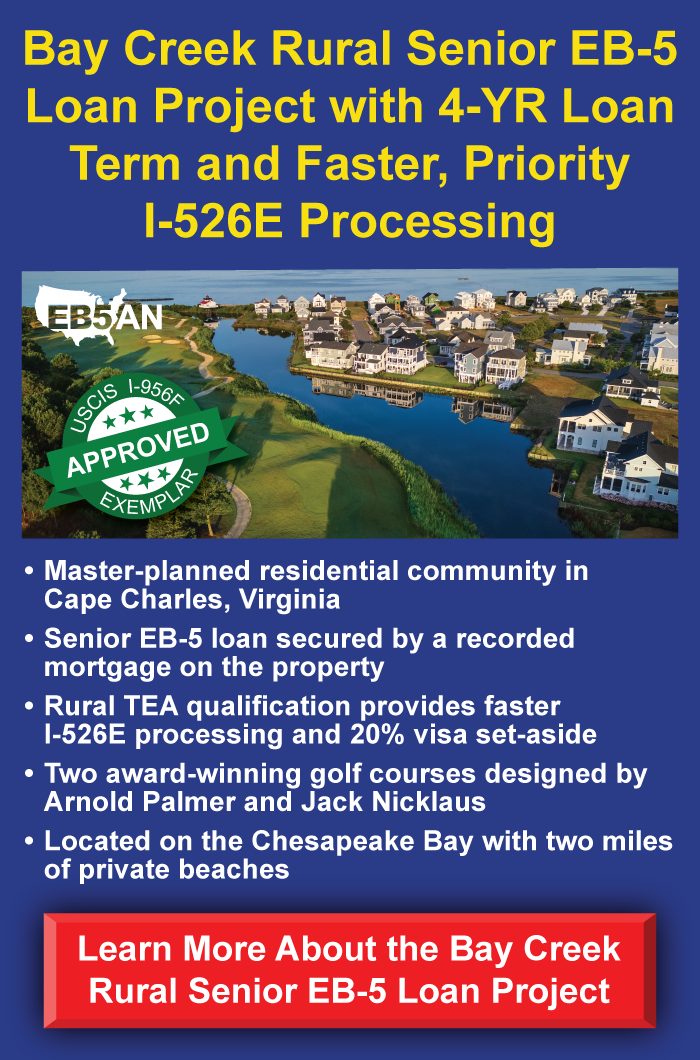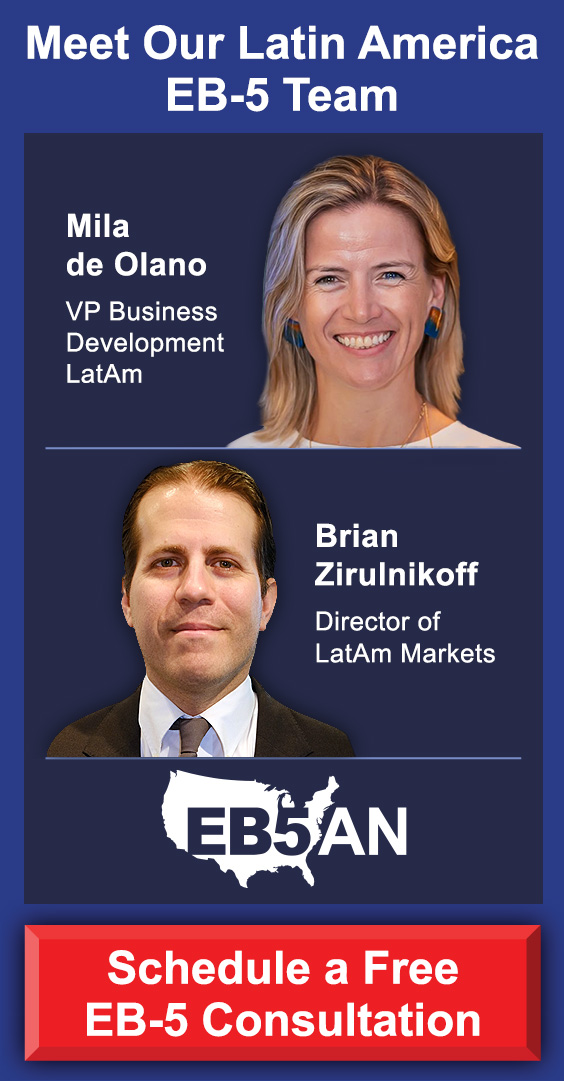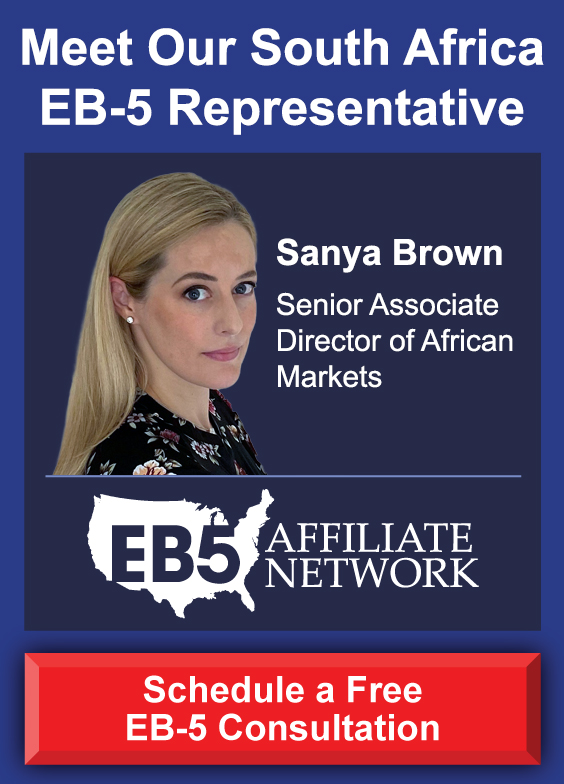Millions of foreign nationals apply to move to the United States every year. It’s easy to see why—the country’s freedom, peace and prosperity, and tremendous opportunities make it a top destination for immigrants.
If you’re a foreign national interested in moving to the United States, keep the five employment visas in mind. These are solid pathways to living and working in the country—but only if United States Citizenship and Immigration Services (USCIS) judges that you’ve fulfilled the criteria.
In this article, we’ll describe the five types of employment-based immigrant visas to help you decide which one is best for your situation.
What Is an Employment-Based Immigrant Visa?
Understanding the Different Employment-Based Visa Categories
Benefits of Switching to an EB-5 Visa
EB5AN Understands How to Help You Get Green Cards
What Is an Employment-Based Immigrant Visa?
An employment based immigrant visa lets a foreign national who has certain skills, qualifications, and/or a job offer come to the United States temporarily or permanently.
Employment-based visas are a popular pathway to U.S. lawful permanent residency. More than 600,000 foreign nationals apply for them each year. However, the United States grants only about 140,000 such visas annually.
Understanding the Different Employment-Based Visa Categories
These visas are spread across five categories, called “preference categories,” that have distinct requirements and eligibility criteria.
The five employment based preference categories are as follows:
- EB-1: Priority Workers and Persons of Extraordinary Ability.
- EB-2: Professionals Holding Advanced Degrees and Persons of Exceptional Ability.
- EB-3: Skilled Workers, Professionals, and Unskilled Workers.
- EB-4: Certain Special Immigrants.
- EB-5: Immigrant Investors.
Let’s take a closer look at each of these EB visa types.
EB-1 Visa: Priority Workers and Persons of Extraordinary Ability
The employment-based first preference visa is meant for individuals with exceptional abilities and achievements or those with certain professional experiences.
This category is further divided into three subcategories:
EB-1A
EB-1A visas are for individuals with extraordinary ability in the sciences, arts, education, business, or athletics. Successful applicants demonstrate this ability with examples of sustained national or international acclaim. Such applicants can also self-petition without a job offer.
EB-1B
EB-1B visas are for outstanding professors and researchers with at least three years of experience in teaching or research. In addition, they must have international recognition in their academic field. This type of visa requires a job offer from a U.S. employer.
EB-1C
EB-1C visas are for certain multinational executives or managers who have been employed for at least one of the three preceding years by the overseas affiliate, parent, subsidiary, or branch of the U.S. employer. This type of visa requires a job offer from a U.S. employer.
EB-2 Visa: Professionals Holding Advanced Degrees and Persons of Exceptional Ability
The employment-based second preference visa is intended for foreign nationals who are highly educated, have exceptional abilities, and fit the criteria from one of the subcategories below:
EB-2A
Professionals with advanced degrees: EB-2A applicants must possess a U.S. master’s, doctorate, or a foreign equivalent degree beyond a baccalaureate degree. Alternatively, instead of holding an advanced degree, they can have a U.S. bachelor’s degree and at least five years of progressive work experience in their field. A permanent job offer from a U.S. employer and a labor certification are required.
EB-2B
Persons with exceptional ability: EB-2B applicants must demonstrate exceptional ability in the sciences, arts, or business. This is a level of expertise significantly above that which is ordinarily encountered in the field. A permanent job offer from a U.S. employer and a labor certification are required.
EB-2C
National Interest Waiver (NIW): The EB-2 NIW is a specialized path within the EB-2 category. It allows those with skills judged to be of great value to the United States to receive a Green Card under a different set of eligibility criteria. Neither a job offer nor a labor certification is required.
What Is Labor Certification?
Obtaining Permanent Labor Certification (PERM) from the Department of Labor (DOL) is a crucial step in the employment-based Green Card process for many EB-2 and EB-3 visa applicants. This certification aims to protect American workers by ensuring there are no willing, able, qualified U.S. workers available to fill the position for which the foreign national is being sponsored. If no such qualified workers are available, the employer files the PERM application (Form ETA-9089) with the DOL.
Once the employer receives this certification, they can submit Form I-140, Immigrant Petition for Alien Workers, for the appropriate employment-based visa category.
EB-3 Visa: Skilled Workers, Professionals, and Unskilled Workers
The employment-based third preference visa is another employment-based Green Card category within U.S. immigration law. It targets foreign workers with varying skill sets and is meant to help fill other labor gaps in the United States.
To be approved, an EB-3 applicant needs a permanent, full-time job offer from a U.S. employer and PERM labor certification from that employer.
Subcategories under the EB-3 program are as follows:
EB-3A
Skilled workers: EB-3A applicants should have at least two years of training or experience in their field.
EB-3B
Professionals: EB-3B applicants should hold a U.S. baccalaureate degree or foreign equivalent degree, and work in a related field.
EB-3C
Unskilled Workers or “Other Workers”: EB-3C applicants should be unskilled workers who will work in jobs requiring less than two years of training or experience. They must have the ability to perform unskilled labor that is not of a temporary or seasonal nature.
EB-4 Visa: Certain Special Immigrants
The employment-based fourth preference visa is meant for certain special immigrants such as the ones below. Each of these subcategories has its own specific eligibility criteria. Labor certification is not required for any of these. This category is closed for the rest of the 2025 fiscal year.
- Religious workers.
- Certain broadcasters.
- Current or former employees of the U.S. government abroad.
- Retired officers or employees of international organizations and their eligible family members.
- Foreign recruits of the U.S. armed forces.
- Special immigrant juveniles.
EB-5 Visa: Immigrant Investors
The employment-based fifth preference visa or the EB-5 Immigrant Investor Program is meant for foreign investors who invest significant capital into the U.S. economy and create jobs for U.S. workers. In return, such investors and their qualified family members receive lawful permanent resident status in the United States.
The EB-5 program is an established and trusted employment based immigration pathway. It does not require PERM labor certification or a job offer. Thanks to the EB-5 Reform and Integrity Act of 2022 (RIA), the application process is also safer, easier, and faster than ever for EB-5 applicants.
This program offers other substantial benefits relative to the other employment-based visas mentioned above, including the following desirable features:
- A relatively straightforward and reliable process.
- Open to most applicants who can make the minimum required investment.
- Offers low financial and immigration risk, particularly to those who invest via a regional center.
What Is the Regional Center Program?
Nearly all EB-5 applicants invest via the regional center program instead of investing directly themselves into a U.S. business. A regional center is an entity that USCIS has pre-approved to promote economic growth and participate in the EB-5 program. EB-5 regional center investors benefit from the help of experienced professional staff, lower risk, and fewer day-to-day management responsibilities relative to direct investors.
Here are the key requirements for this type of visa:
- Invest the required amount: EB-5 applicants must ordinarily invest $1,050,000 to be approved. The minimum investment amount decreases to $800,000 for a project located in a targeted employment area (TEA). The investment funds must be derived from lawful sources and kept “at risk”—not withdrawn from the investment project—for at least two years.
- Prove lawful source of funds: To qualify for an EB-5 visa, investors must prove that their investment funds come from a lawful source. This means they must document where the money originated—such as earnings from employment, sale of property, inheritance, or loans—and provide supporting evidence. USCIS requires a clear paper trail to ensure the funds were legally obtained and transferred.
- Fulfill appropriate management responsibilities: A direct investor must be actively involved in the day-to-day operations of the business. A regional center investor’s role is passive with few responsibilities.
- Create jobs: The investment must create or preserve at least 10 full-time jobs for qualified U.S. workers that last for at least two years.
Get Approved Faster and Cheaper With a Targeted Employment Area Investment
Investing in a project located in a TEA is one way for an EB-5 investor to potentially avoid visa backlogs and speed up the application process at a lower cost.
TEAs are rural or high-unemployment parts of the country that are in need of economic stimulus and job creation. The U.S. government incentivizes investments in TEAs with a lower qualifying minimum investment amount of $800,000.
The RIA also introduced set-aside visa categories that allocated EB-5 visas as follows:
- Rural TEA projects (also eligible for priority processing): 20%
- High-unemployment TEA projects: 10%
- Public infrastructure projects: 2%
Non-TEA projects get the remaining 68% of EB-5 visas.
Note that the growing popularity of TEA investments means that visa backlogs will be possible later on, especially for those EB-5 applicants from high-demand countries like China and India who do not act quickly.
The EB-5 Application and Approval Processes
Here’s an overview of the main steps of the EB-5 application process:
- Choose whether to invest directly or via a regional center.
- Select an EB-5 project to invest in.
- Gather required documentation for your application and fill out USCIS paperwork with the help of an immigration attorney.
- If eligible, file your Form I-526/I-526E immigrant petition concurrently with Form I-485 to change immigration status. If not, you may go through consular processing.
- Receive temporary conditional Green Cards for yourself and qualified family members while keeping your money invested for at least two years.
- File Form I-829 to remove conditions from your Green Cards. Upon approval, you and your family members will be unconditional lawful permanent residents of the United States.
Benefits of Switching to an EB-5 Visa
These are some of the primary reasons why foreign nationals choose to switch from one employment-based visa program to the EB-5 program:
- Shorter wait times: Historically, applicants from high-demand countries like China and India have faced major visa backlogs in other employment-based visa categories. EB-5 visa applicants have options to get their Green Cards faster.
- No need for a job offer: Unlike many other employment-based visa applicants, who require continuous employer sponsorship, the EB-5 process allows applicants to self-petition.
- Increased control and flexibility: EB-5 investors have the flexibility to decide how involved they wish to be in management decisions. They can independently choose where to live or work in the U.S.
- Family-friendly policies: The EB-5 program allows an investor’s qualified family members (spouse and unmarried children under 21) to become U.S. lawful permanent residents.
- Expedited path to residency: The EB-5 program grants eligible applicants a conditional Green Card early in the process, which allows them to live and work in the United States while fulfilling the program’s investment and job creation requirements.
EB5AN Understands How to Help You Get Green Cards
Foreign nationals can choose between five kinds of employment-based visas. Each has its own eligibility criteria, and prospective applicants should study each carefully to find the one that’s the right fit for their individual circumstances.
The EB-5 Immigrant Investor Program is the best option for many foreign nationals who have the required investment funds and desire a reliable pathway to permanent residence for themselves and their families. If you decide this path is right for you, the best first step is to connect with reputable industry professionals who can guide you through the process.
EB5AN has helped more than 2,700 families from 70+ countries relocate to the United States as lawful permanent residents. Our expert team has more than a decade of experience, and offers clients first-rate, low-risk EB-5 regional center projects with 100% USCIS project approval rate to date.
To learn more, book a free call with us today.













